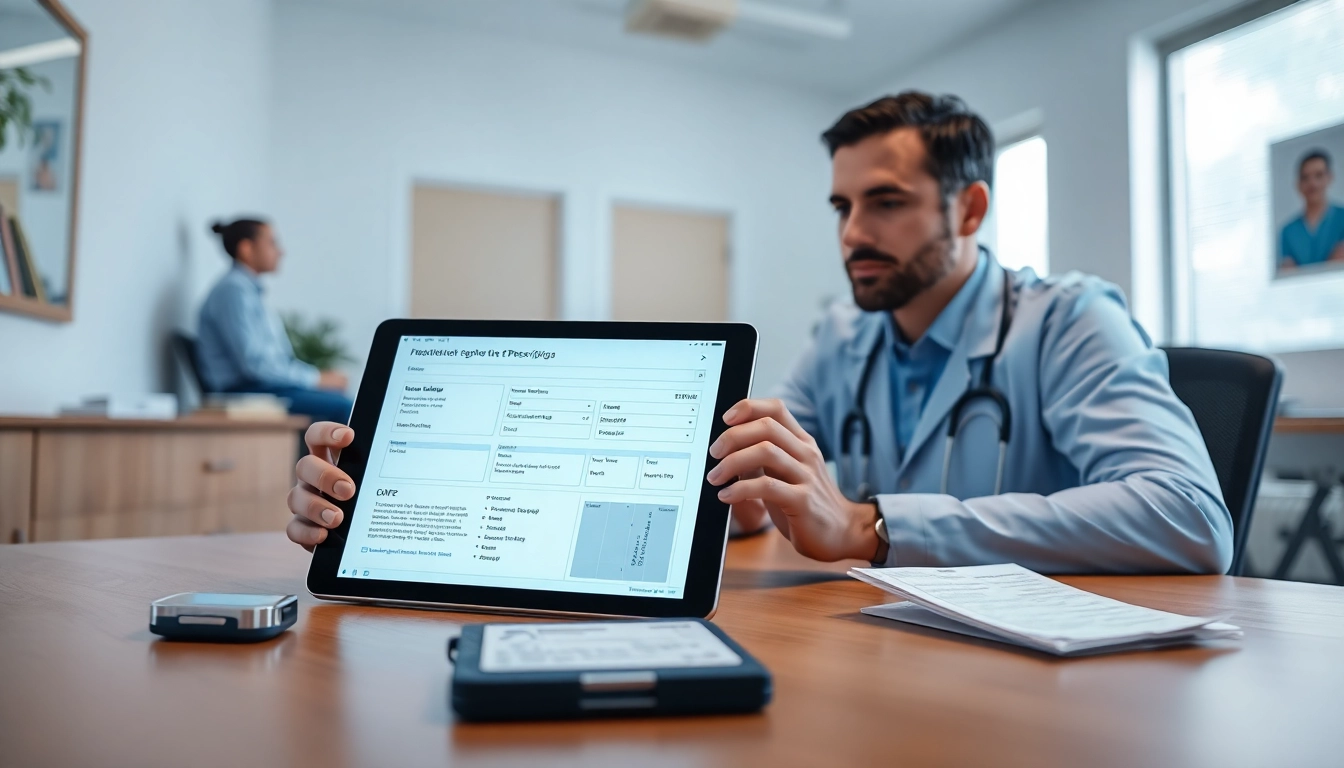Introduction to Eprescribing vs Traditional Prescribing
The evolution of prescribing practices is crucial in enhancing patient safety, improving medication adherence, and streamlining healthcare delivery. As technology advances, healthcare providers are increasingly faced with a choice between eprescribing vs traditional prescribing. This article delves into the definitions, historical context, advantages, and challenges of both methods, paving the way for a comprehensive understanding of their implications in modern medicine.
Definition of Eprescribing
Eprescribing, or electronic prescribing, refers to the digital generation and transmission of a prescription order from a healthcare provider to a pharmacy. This process typically integrates with electronic health records (EHRs), allowing for a more efficient, accurate, and streamlined method of managing prescriptions. Eprescribing systems not only facilitate the writing of prescriptions but also enable healthcare professionals to manage patient medication records, access medication history, and check for possible drug interactions.
Definition of Traditional Prescribing
Traditional prescribing involves the handwritten or printed issuance of a prescription by healthcare professionals to patients. This method has been the standard practice for decades, requiring patients to physically carry paper prescriptions to a pharmacy. While it has served its purpose well, traditional prescribing often leads to issues such as misinterpretation of handwriting, loss of prescriptions, and difficulties in tracking patient medication history.
Historical Context of Prescription Methods
The practice of prescribing medications dates back to ancient civilizations when physicians would recommend herbal remedies and potions. Over the centuries, this evolved into a more formalized process, especially with the introduction of standardized pharmaceutical formulations in the 19th and 20th centuries. The advent of computers and digital technologies in the late 20th century marked a significant turning point, paving the way for the development of eprescribing systems designed to enhance accuracy, accessibility, and efficiency in medication management.
Advantages of Eprescribing
Improved Accuracy and Safety
One of the most significant advantages of eprescribing is its ability to reduce errors associated with traditional prescribing. Handwritten prescriptions can often be misread due to illegible handwriting or misunderstanding medical terminology. Eprescribing eliminates these risks by using standardized digital formats and real-time error-checking algorithms that alert clinicians to potential prescribing errors, allergies, or dangerous drug interactions.
Enhanced Convenience for Patients
Eprescribing offers increased convenience for patients by enabling them to receive prescriptions directly to their preferred pharmacies without the need to physically present a paper prescription. This not only saves time but also reduces the chances of losing a prescription. Furthermore, patients can often have their prescriptions filled remotely, which is particularly essential for those with mobility issues or those residing in remote areas.
Integration with Health Records
The integration of eprescribing with electronic health records allows for streamlined medication management. Clinicians can easily access a patient’s complete medication history, current medications, and allergies, ensuring that prescriptions are tailored to individual patient needs. This comprehensive view supports improved clinical decisions and enhances overall patient care.
Challenges with Eprescribing
Technological Barriers and Limitations
Despite its numerous advantages, the implementation of eprescribing is not without its challenges. Not all healthcare facilities have access to advanced technology or the necessary infrastructure to support e-prescribing systems. Small practices may struggle with the high costs associated with software implementation and maintenance. Additionally, technical issues such as system downtimes and software glitches can disrupt the prescribing process.
Resistance from Healthcare Providers
There can also be resistance from healthcare providers who are accustomed to traditional methods or are wary of adapting to new technologies. Some clinicians may feel that the transition to electronic systems requires additional training that they might not have the time or resources to commit to, leading to reluctance in adopting eprescribing practices.
Patient Privacy Concerns
With the increased reliance on technology, patient privacy and data security become paramount concerns. Eprescribing systems can be susceptible to breaches if not adequately protected. Patients may have apprehensions about their sensitive information being exposed or mismanaged, which can hinder the overall acceptability of e-prescribing within certain demographics.
Comparative Analysis: Eprescribing vs Traditional Prescribing
Medication Adherence Rates
Research indicates that patients using eprescribing systems demonstrate higher medication adherence rates compared to those relying on traditional prescriptions. The convenience and immediacy of receiving digital prescriptions reduce barriers to access and help ensure that patients begin their treatment regimens promptly. Enhanced communication between providers and pharmacies further supports adherence by allowing for better follow-up and monitoring of patient progress.
Error Reduction and Patient Safety
Studies consistently show that eprescribing significantly reduces the likelihood of medication errors. With traditional prescriptions, errors can occur during transcribing from paper to pharmacy systems or due to illegible handwriting. Eprescribing systems inherently mitigate these risks, leading to safer medication practices and improved outcomes for patients. Additionally, automated alerts for potential drug interactions and contraindications safeguard patients, contributing to an overall enhancement of medication safety.
Cost-Effectiveness and Workflow Efficiency
When comparing the cost-effectiveness of eprescribing versus traditional methods, evidence suggests that the former yields a more efficient workflow. While the initial investment in technology may be substantial, long-term savings often arise through reduced paperwork, fewer medication errors, and improved communication among healthcare teams. Streamlined workflows reduce administrative burdens, allowing healthcare providers to focus more on patient care rather than the logistics of managing paper prescriptions.
Future Trends in Prescribing
Predictions for Eprescribing Adoption Rates
As technology continues to advance and become more intertwined with healthcare practices, predictions indicate a significant increase in the adoption of eprescribing across various settings—particularly as regulatory measures require electronic health record usage. Younger generations of healthcare providers trained in digital systems are likely to accelerate this shift, fostering an environment where eprescribing becomes the standard.
Emerging Technologies in Healthcare
Emerging technologies such as artificial intelligence (AI), machine learning, and blockchain are anticipated to further enhance eprescribing systems. AI could play a critical role in developing intuitive interfaces that predict physician preferences for generic alternatives, while blockchain technology could ensure a more secure and transparent method of managing patient data. Such advancements will likely address current challenges and enhance the overall patient experience.
Policy Changes Impacting Prescription Practices
Policy changes advocating for more efficient and safer prescribing practices will influence the trajectory of eprescribing. Initiatives aimed at improving patient safety and reducing medication errors will likely drive legislative support for electronic systems. Financial incentives and penalties for adopting or rejecting electronic methods may further catalyze this transition, establishing e-prescribing as the norm in medical practice.
Conclusion
The ongoing debate of eprescribing vs traditional prescribing hinges on the balance between innovation and practical implementation. While the benefits of eprescribing concerning accuracy, convenience, and safety are clear, challenges remain, particularly related to technology adoption, security, and acceptance among providers. As healthcare continues to evolve, embracing electronic methods may be a critical step toward achieving a more efficient, patient-centered approach to medication management.



